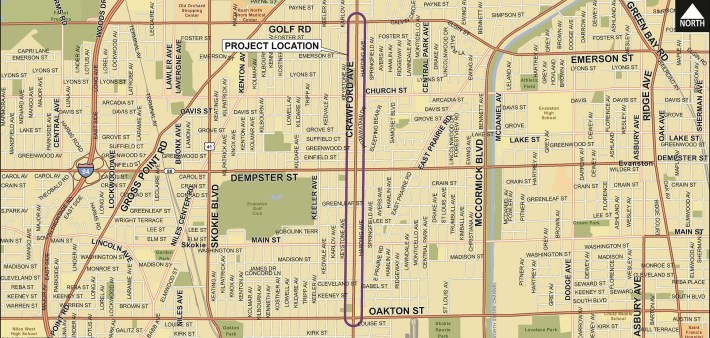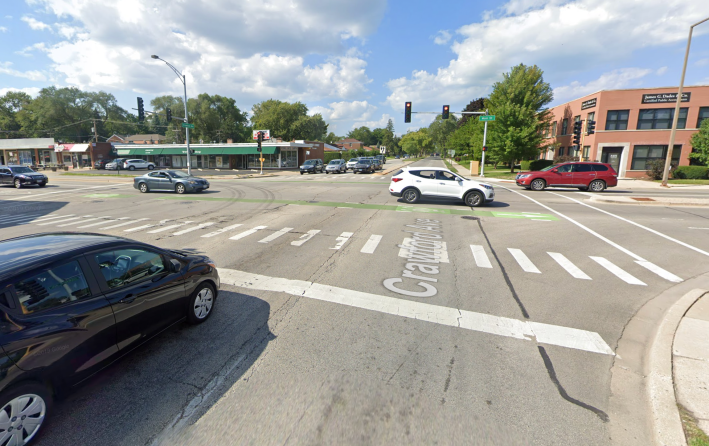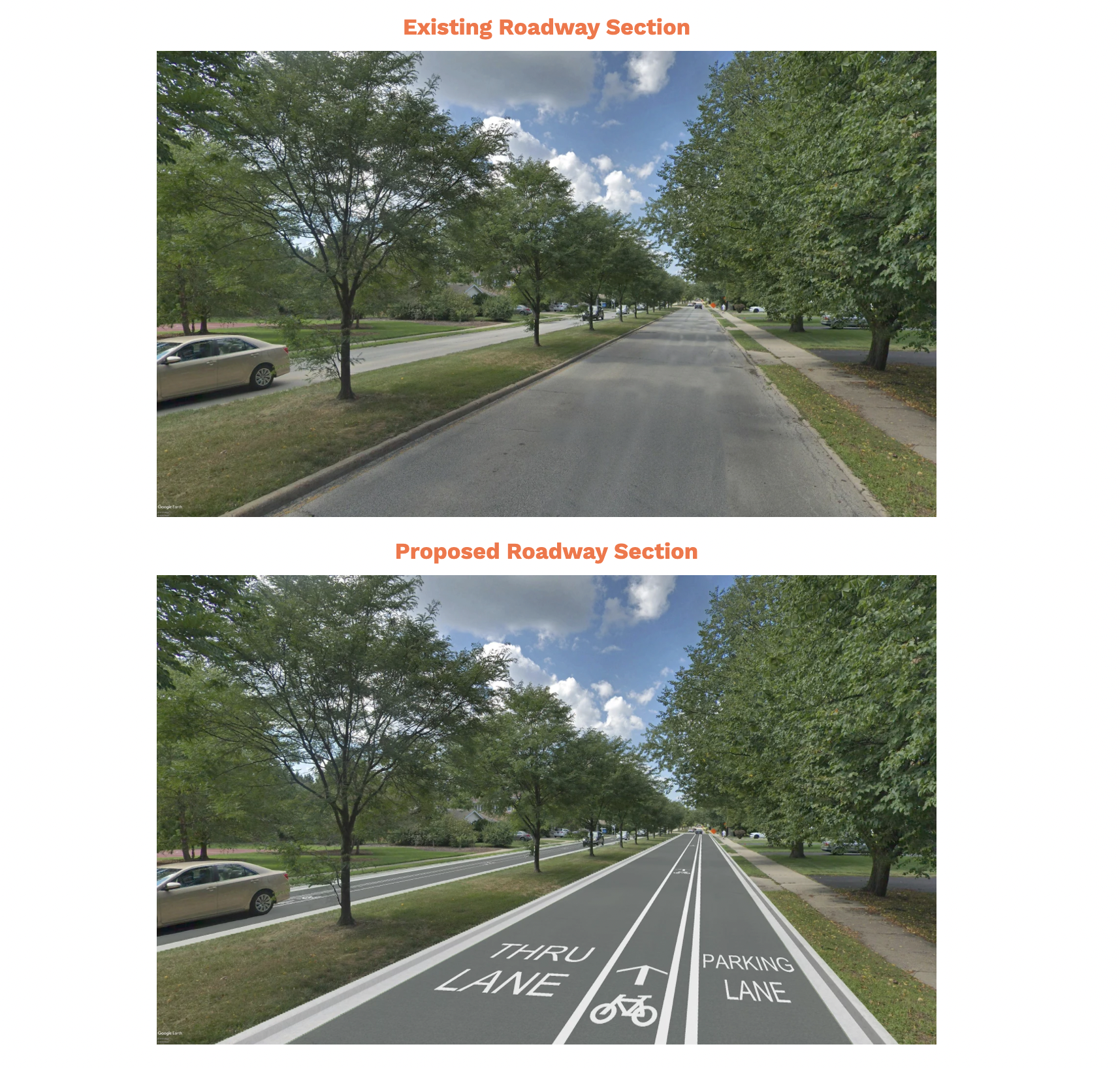As a Rogers Park resident, I live relatively close to near-north suburban Skokie, but I rarely visit because I generally feel uncomfortable biking in the suburbs, where wide roads with high-speed traffic are common. (Evanston, which has been building physically-protected bike lanes, is the lone exception.) However, the village of Skokie is attempting to “promote pedal power” with a redesign of Crawford Avenue, according to local officials.
Skokie and Cook County have agreed on a $12 million redesign of the two-mile section of Crawford between Oakton Street and Golf Road with the aim of making the roadway more appealing to cyclists. The street is equivalent to Pulaski Road in Chicago (4000 W.) and runs a mile west of the North Shore Channel Trail. Construction is tentatively scheduled to start in 2024.

The new Crawford bike lanes will connect with the existing east-west bike lanes on Main Street, as well as proposed east-west bike lanes on Church Street. Skokie also plans to add more covered bike racks at the Oakton CTA Yellow Line station, as well as the Dempster Yellow stop, which currently has no covered bike parking. Both stations are located roughly a mile west of Crawford.

According to officials, the new layout of Crawford will include non-protected bike lanes, and is intended to enhance traffic flow and increase safety for motorists, bike riders, and pedestrians while maintaining on street parking. "The Crawford Avenue existing lane use is poorly defined," states the project website. "The lane and median widths vary through the corridor, but the pavement width is about 20 to 21 feet wide in each direction with a 16- to 18-foot-wide landscaped median. Parking is allowed within the corridor which contributes to driver confusion when drivers using the outside pavement come upon a parked vehicle and make quick merging decisions. Therefore, the existing roadway functions like a one lane road in each direction with parked vehicles." The goal of the new layout is to better organize traffic and provide clearly delineated areas for parking and riding bikes.
There will generally be one travel lane in each direction, which will be narrower than currently, calming traffic and shortening pedestrian distances. Unfortunately, however, the layout will balloon to a five-lane street at the five intersections with stoplights, where there will be left-turn lanes, a through lane, and a combined through-lane / right-turn lane in each direction. That's not a particularly safe or comfortable situation for bike riders.

I find it interesting that the Cook County Department of Transportation and Highways put forth a design that forces people on bikes to share the road with five lanes of traffic in non-protected bike lanes, despite the fact that the county's bike plan states a goal of building more low-stress bikeways.
"Existing data shows significant bicycle trips on Crawford Avenue," Skokie engineering director Russ Rietveld, according to the Chicago Tribune. "The proposed bike lanes could increase bicycle trips and thereby reduce vehicle trips and emissions." While that's a worthy goal, in reality the new bike lanes, which offer no physical protection from drivers and put bike riders in a high-stress situation at stoplight intersections, are unlikely to attract many new riders.
Skokie has hosted one community meeting on the Crawford project, and another meeting is planned for this spring at a date TBD, which Rietveld said will inform the final preliminary design. The hearing will be announced on the village's website www.skokie.org under "Featured Announcements," in in Skokie's e-newsletter, which is published each Tuesday afternoon.




